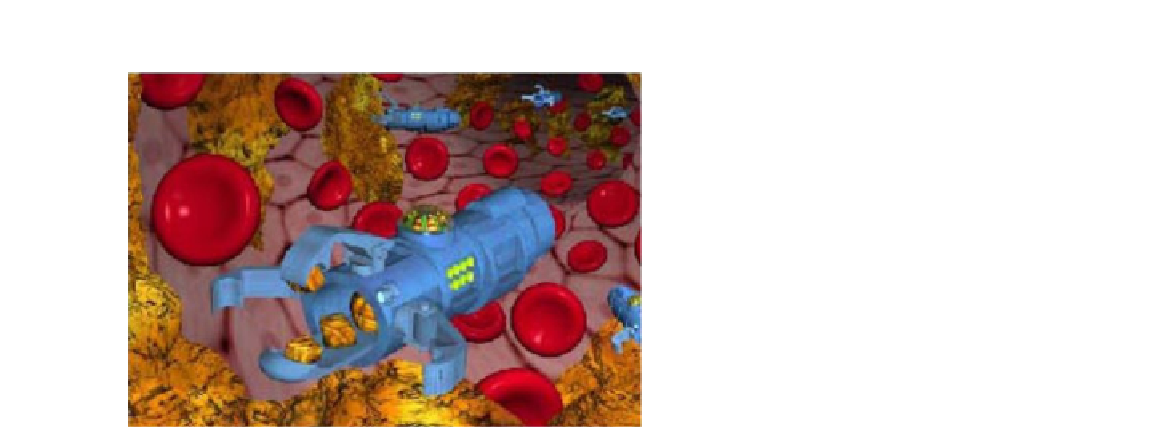Biomedical Engineering Reference
In-Depth Information
FIGURE 21.4
Nanobots preventing heart attacks (artist's view)
[5]
.
the drug to the sites where they are needed. One currently used form of therapy, although it does not
overcome the BBB, is the so-called hyperthermia therapy, which uses nanoiron particles to treat brain
tumors such as glioblastoma
[11]
(
Figure 21.5
).
21.4.3.3 Tissue Reconstruction
Nanoparticles can be designed with a structure very similar to that of bone. An ultrasound is per-
formed on existing bone structures and then bone-like nanoparticles are created using the results of
the ultrasound
[3]
. The bone-like nanoparticles are inserted into the body in a paste form
[6]
. When
they arrive at the fractured bone site, they assemble themselves to form an ordered structure which
later becomes part of the bone
[6]
.
21.4.3.4 Medical Tools
Nanodevices are nanoparticles that are created for the purpose of interacting with cells and tissues
and carrying out very specific tasks
[3]
. The most famous nanodevices are the imaging tools. Oral
pills can be taken that contain miniature cameras. These cameras can reach deep parts of the body
and provide high-resolution pictures of cells as small as 1 μm in width. (A red blood cell is 7 μm wide
[4].
) This makes them very useful for diagnosis and also during surgeries.
Figure 21.6
shows such
cameras working with other nanoparticles to get rid of a disease.
21.4.4
Other Applications
21.4.4.1 Treatment of Injured Nerves
Another key application for nanoparticles is in the treatment of injured nerves. Samuel Stupp and
John Kessler at Northwestern University in Chicago have studied on tiny rod-like nanofibers called
amphiphiles
. They are capped with amino acids and are known to spur the growth of neurons and

